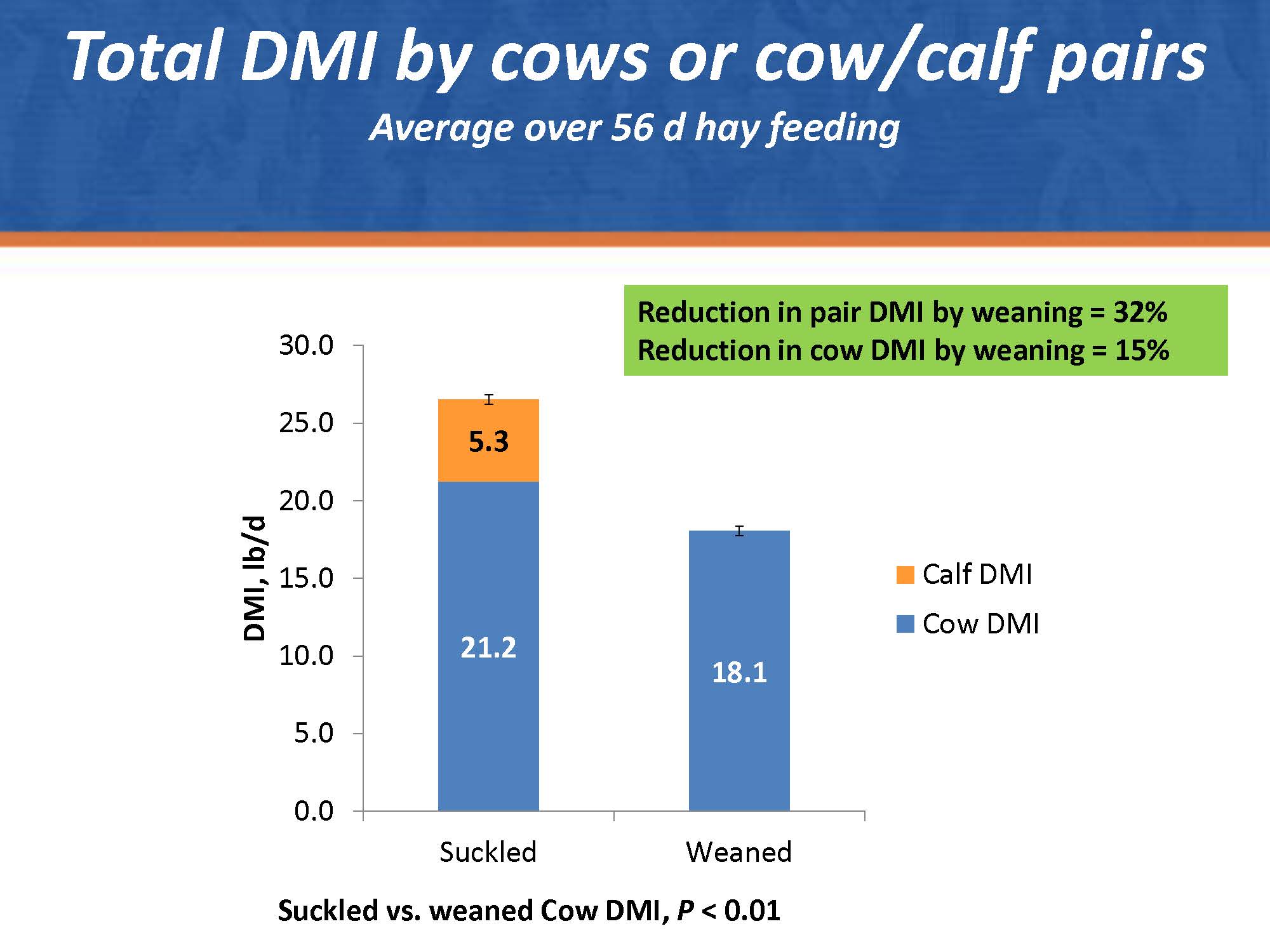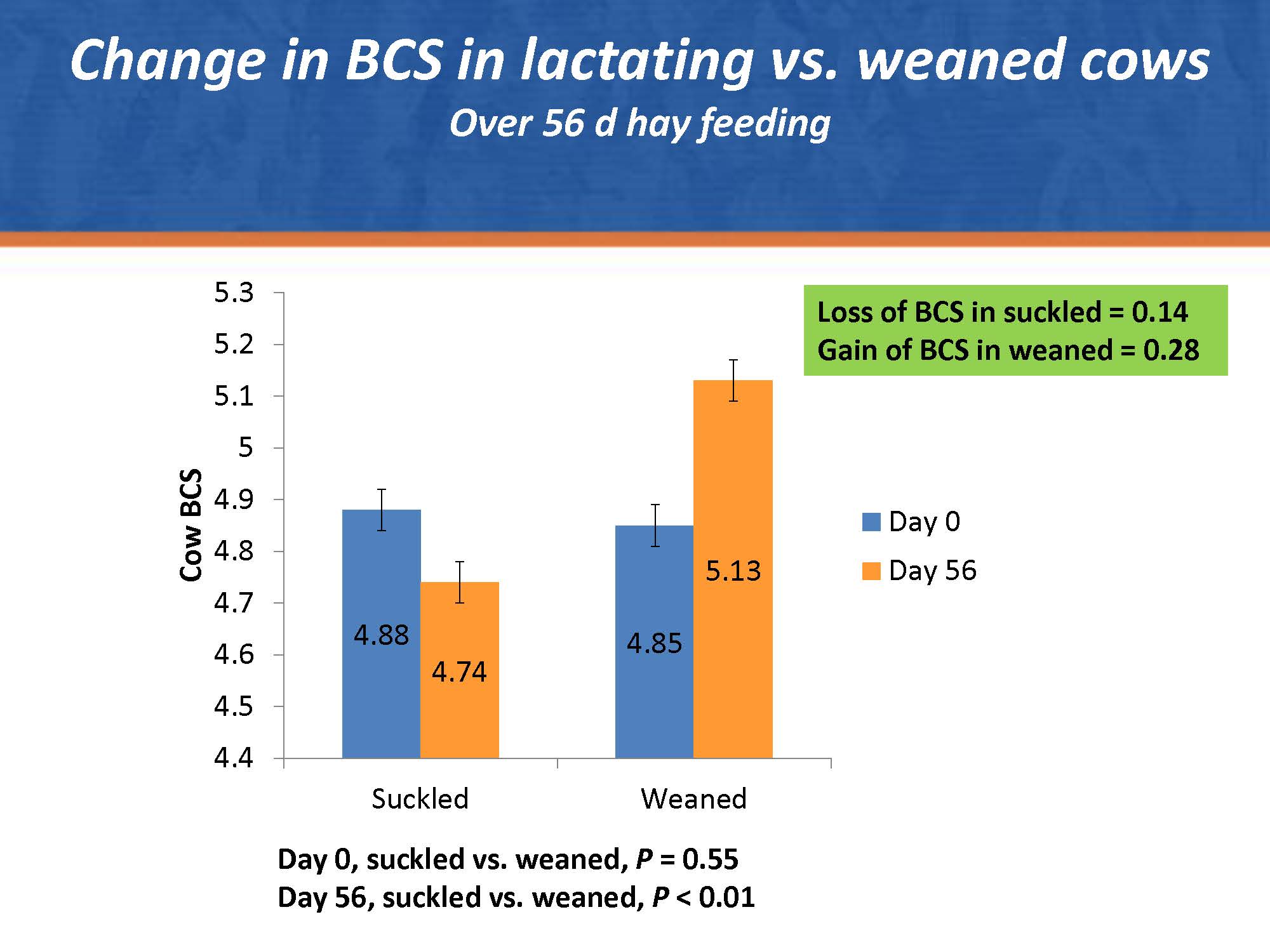Effect of weaning on forage intake of lactating cows
Weaning time for cow/calf producers is a time to harvest the fruits of a yearlong investment in time and effort to manage the cowherd to achieve that textbook goal of producing one calf per cow per year. Depending on the marketing strategy of the calf crop, weaning can also be the time to reap the economic benefits of the year’s investment in feed, labor, semen, bulls, etc. All in all, and although weaned calves will disagree, it seems as it is a rewarding time in the cow/calf production cycle. While perhaps not immediately noticeable, nobody is more relieved at weaning than the lactating beef cow that, hopefully, may be pregnant and all of a sudden experiences a great reduction in her nutrient requirements. Milk production is the most nutrient-demanding process in a beef cow if we consider the amount of energy and protein that she needs to produce per day. It is for this very reason that often we resource to early weaning strategies in the case of a drought or even during normal years when we want to improve the plane of nutrition of the cow before the next calving season.
Nutrient requirements in the beef cow can be reduced by 20 to 30% after weaning. Typically the post-weaning period is the time for the cow to regain condition in preparation for the next lactation. Thus, while feed intake may be reduced, the biggest impact is typically observed in body condition score. Measuring intake of forage by cows to quantify the impact of weaning can be quite challenging. A recent study conducted at the University of Florida to quantify the changes in forage intake in cows after weaning as one of the objectives. A total of 120 cows were housed at the NFREC-Feed Efficiency Facility in Marianna, of which 60 were weaned at approximately 5 months of lactation, and the other 60 remained with their calves. All cows were fed bermudagrass hay for 8 weeks and hay intake in both cow and calves was measured daily. Figures 1 and 2 show some of the relevant results in feed intake by cows and calves and the impact of weaning on body condition score.
One of the interesting observations is that while feed intake by cows was only decreased by 15% in weaned vs. lactating cows (Fig. 1), that translated into a body condition score gain of 0.28 units, while the suckling cows lost 0.14 units of body condition score over the 56 days of the study (Fig. 2). This change in body reserves may have an impact on the subsequent lactation and is the reason why in certain situations early weaning can be used as a strategic tool to relieve the cow from the nutrient-demanding process of lactation. However, the economic benefits in terms of body weight gain by the cow and potential improvements in subsequent breeding season need to be weighed against the daily weight gain of calves that remain suckling, and more importantly, the cost of producing those extra pounds of calf.


